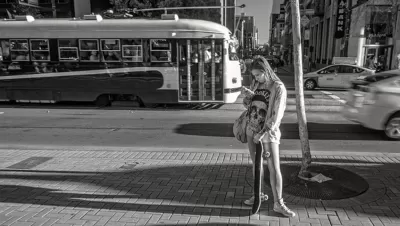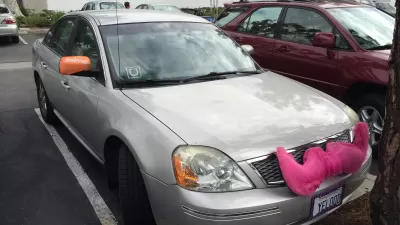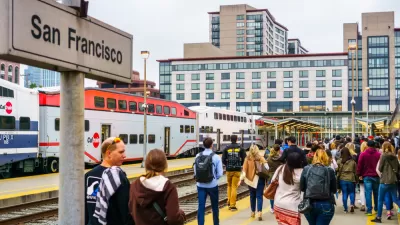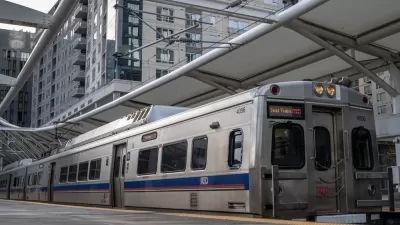Hate it or love it, Uber has changed the transportation game across this country. To boost ridership and change its public image, transit should consider taking some cues from the rideshare giant.

Uber isn't universally beloved by any means, but its Silicon Valley disdain for the way things are done has brought it massive success, especially in cities where it supplements and competes with public transit. This piece gives us three ways transit can learn from Uber. Accompanying GIFs of current and former presidential candidates Clinton, Bush, and Rubio may make all of this more palatable.
Here are the three lessons:
- Transition to app-driven payment. "When you get in an Uber, you don't pay fare like you do on a bus. You just start moving. When you reach your destination, you don't fumble for cash and wait for change like you do in a taxi. You just get out." This creates a "magical feeling" transit would do well to replicate in the iPhone age.
- It's easier for a digital startup to tweak frequencies, but that doesn't make this aspect of customer service any less essential. "With much fanfare, Austin introduced bus services that come every 15 minutes at peak times and every 20 minutes off-peak. For Uber, by contrast, a passenger waiting 15 minutes for service is considered a failure."
- Horror stories aside, Uber places a priority on driver courtesy and quality of service. The author recommends that "transit agencies could incorporate a method for customers who pay by app to rate their rides and use information to grade and improve drivers. This would require a massive–but necessary–change in how agencies relate to their drivers and customers."
FULL STORY: Three Lessons Public Transit Can Learn From Uber

Maui's Vacation Rental Debate Turns Ugly
Verbal attacks, misinformation campaigns and fistfights plague a high-stakes debate to convert thousands of vacation rentals into long-term housing.

Planetizen Federal Action Tracker
A weekly monitor of how Trump’s orders and actions are impacting planners and planning in America.

In Urban Planning, AI Prompting Could be the New Design Thinking
Creativity has long been key to great urban design. What if we see AI as our new creative partner?

Cal Fire Chatbot Fails to Answer Basic Questions
An AI chatbot designed to provide information about wildfires can’t answer questions about evacuation orders, among other problems.

What Happens if Trump Kills Section 8?
The Trump admin aims to slash federal rental aid by nearly half and shift distribution to states. Experts warn this could spike homelessness and destabilize communities nationwide.

Sean Duffy Targets Rainbow Crosswalks in Road Safety Efforts
Despite evidence that colorful crosswalks actually improve intersection safety — and the lack of almost any crosswalks at all on the nation’s most dangerous arterial roads — U.S. Transportation Secretary Duffy is calling on states to remove them.
Urban Design for Planners 1: Software Tools
This six-course series explores essential urban design concepts using open source software and equips planners with the tools they need to participate fully in the urban design process.
Planning for Universal Design
Learn the tools for implementing Universal Design in planning regulations.
Appalachian Highlands Housing Partners
Gallatin County Department of Planning & Community Development
Heyer Gruel & Associates PA
Mpact (founded as Rail~Volution)
City of Camden Redevelopment Agency
City of Astoria
City of Portland
City of Laramie





























